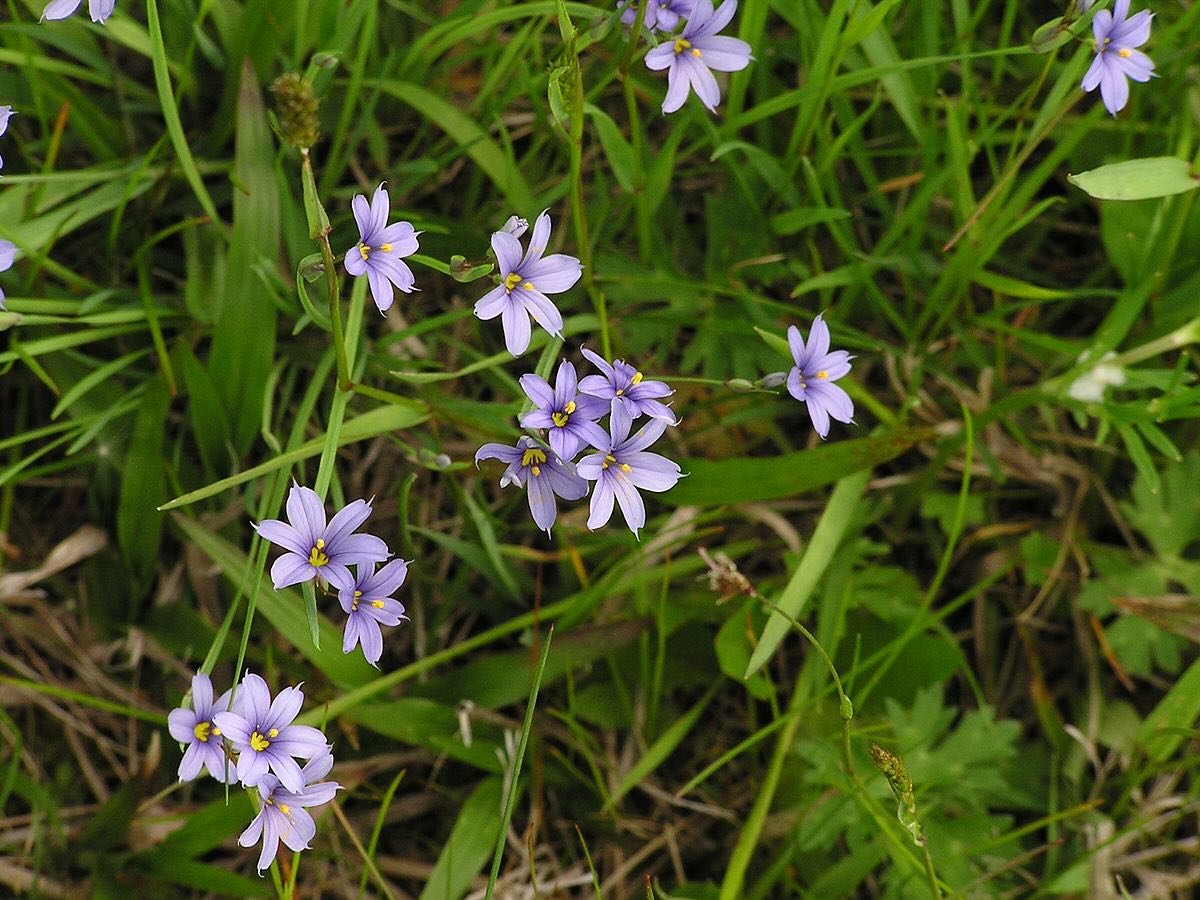
Sisyrinchium, often called blue-eyed grass, is a charming plant that belongs to the iris family. Despite its name, it isn't a grass but a perennial herb. These plants are known for their delicate, star-shaped flowers that come in shades of blue, purple, and sometimes white. Did you know that there are over 140 species of Sisyrinchium? They thrive in a variety of habitats, from meadows to woodlands. Interestingly, some species are even found in mountainous regions. These plants are not just pretty; they play a role in local ecosystems by attracting pollinators like bees and butterflies. Want to learn more about this fascinating plant? Keep reading to uncover 39 intriguing facts about Sisyrinchium!
What is Sisyrinchium?
Sisyrinchium, commonly known as blue-eyed grass, is a genus of flowering plants in the iris family. Despite its name, it isn't a true grass. These plants are known for their delicate, star-shaped flowers and grass-like leaves.
- Sisyrinchium belongs to the Iridaceae family, which includes irises and crocuses.
- There are over 200 species of Sisyrinchium, found mainly in the Americas.
- The name "Sisyrinchium" comes from the Greek words for "pig snout", referring to the plant's roots, which pigs are said to enjoy eating.
- These plants are perennials, meaning they live for more than two years.
- Sisyrinchium flowers typically bloom in late spring to early summer.
Appearance and Characteristics
Sisyrinchium plants are admired for their charming flowers and slender, grass-like foliage. Let's delve into their unique features.
- The flowers are usually blue or purple, but some species have white, yellow, or pink blooms.
- Each flower has six petals, arranged in a star shape.
- The leaves are narrow and linear, resembling blades of grass.
- Sisyrinchium plants can grow up to 20 inches tall, depending on the species.
- The flowers open in the morning and close by afternoon.
Habitat and Distribution
Sisyrinchium species thrive in various environments, from meadows to woodlands. Their adaptability makes them a common sight in many regions.
- These plants are native to North and South America.
- They prefer well-drained soil and can tolerate both full sun and partial shade.
- Sisyrinchium is often found in prairies, meadows, and open woodlands.
- Some species are adapted to wetlands and can grow in marshy areas.
- They are also found in alpine regions, showcasing their versatility.
Uses and Benefits
Beyond their beauty, Sisyrinchium plants have various uses and benefits, both ecological and practical.
- Sisyrinchium attracts pollinators like bees and butterflies.
- Some species are used in traditional medicine for their purported healing properties.
- The plants can be used in landscaping to add color and texture to gardens.
- Sisyrinchium is known for its low maintenance, making it ideal for beginner gardeners.
- They can help prevent soil erosion with their dense root systems.
Interesting Facts
Sisyrinchium has some fascinating traits and historical tidbits that make it even more intriguing.
- Some species of Sisyrinchium are endangered due to habitat loss.
- The plant's seeds are tiny and black, often dispersed by wind or water.
- Sisyrinchium is sometimes called "blue-eyed grass" because of its blue flowers and grass-like appearance.
- The flowers are short-lived, typically lasting only one day.
- Despite their delicate appearance, Sisyrinchium plants are quite hardy.
Cultivation and Care
Growing Sisyrinchium can be a rewarding experience. Here are some tips to help you cultivate these lovely plants.
- Plant Sisyrinchium in spring or fall for the best results.
- They prefer full sun but can tolerate partial shade.
- Ensure the soil is well-drained to prevent root rot.
- Water the plants regularly, especially during dry spells.
- Divide the plants every few years to maintain their vigor.
Fun Facts
Let's wrap up with some fun and quirky facts about Sisyrinchium that you might not know.
- Sisyrinchium is sometimes used in floral arrangements for its unique appearance.
- The plant's flowers are edible and can be used as a garnish.
- Some species have a pleasant fragrance, adding to their appeal.
- Sisyrinchium can be grown in containers, making it versatile for small spaces.
- The plant's name is often mispronounced; it's correctly said as "siss-uh-RINK-ee-um."
Ecological Impact
Sisyrinchium plays a significant role in its ecosystem, contributing to biodiversity and supporting wildlife.
- The plants provide habitat for small insects and animals.
- They are part of the food chain, with their seeds and foliage consumed by various creatures.
- Sisyrinchium helps maintain soil health by preventing erosion and improving soil structure.
- The plants contribute to biodiversity, supporting a wide range of pollinators and other wildlife.
Sisyrinchium: A Fascinating Plant
Sisyrinchium, often overlooked, holds a treasure trove of interesting facts. These charming plants, part of the iris family, boast vibrant blue or purple flowers that brighten up gardens. They thrive in various climates, from North America to South America, showcasing their adaptability. Not just pretty faces, some species have medicinal uses, treating ailments like fevers and stomach issues. Their unique star-shaped blooms attract pollinators, supporting local ecosystems.
Gardeners love Sisyrinchium for its low maintenance and resilience. It’s a great choice for adding a splash of color without much fuss. Whether you’re a seasoned botanist or a casual gardener, these plants offer something special. Next time you spot one, take a moment to appreciate its beauty and the role it plays in nature. Sisyrinchium truly is a small wonder in the plant world.
Was this page helpful?
Our commitment to delivering trustworthy and engaging content is at the heart of what we do. Each fact on our site is contributed by real users like you, bringing a wealth of diverse insights and information. To ensure the highest standards of accuracy and reliability, our dedicated editors meticulously review each submission. This process guarantees that the facts we share are not only fascinating but also credible. Trust in our commitment to quality and authenticity as you explore and learn with us.
